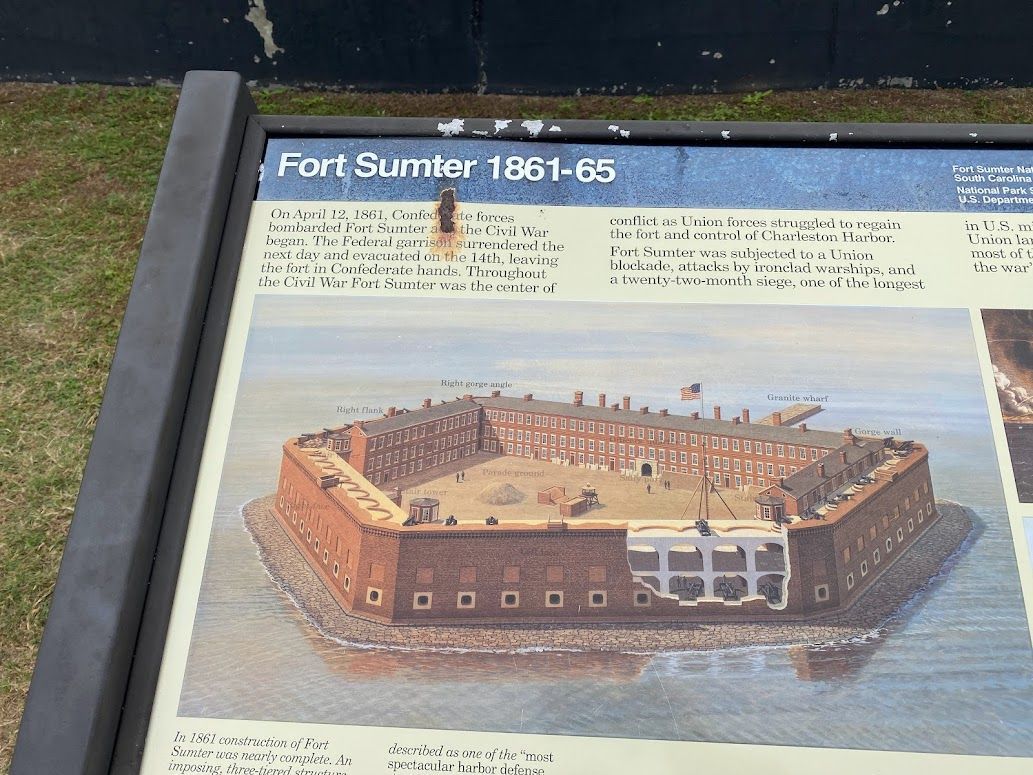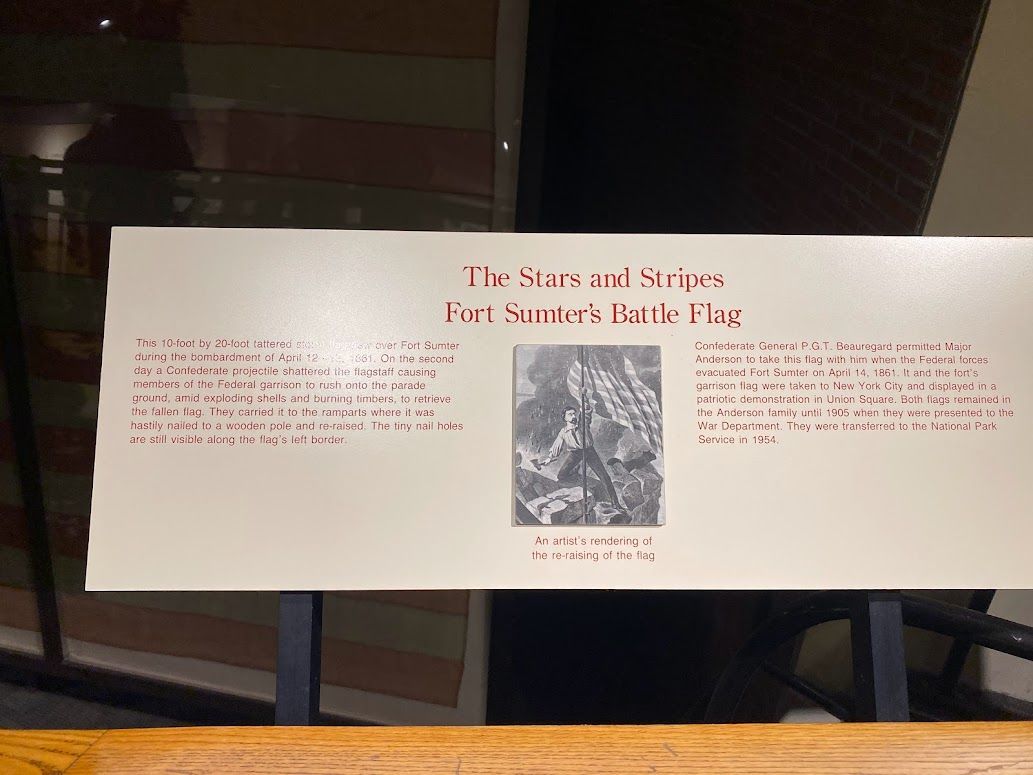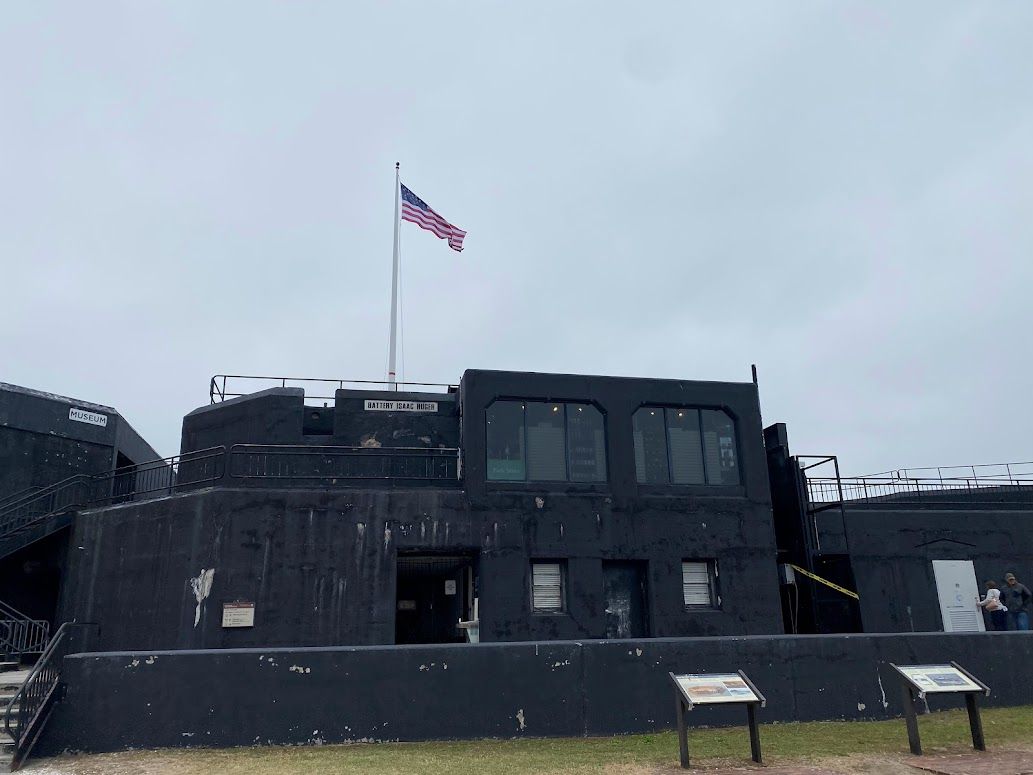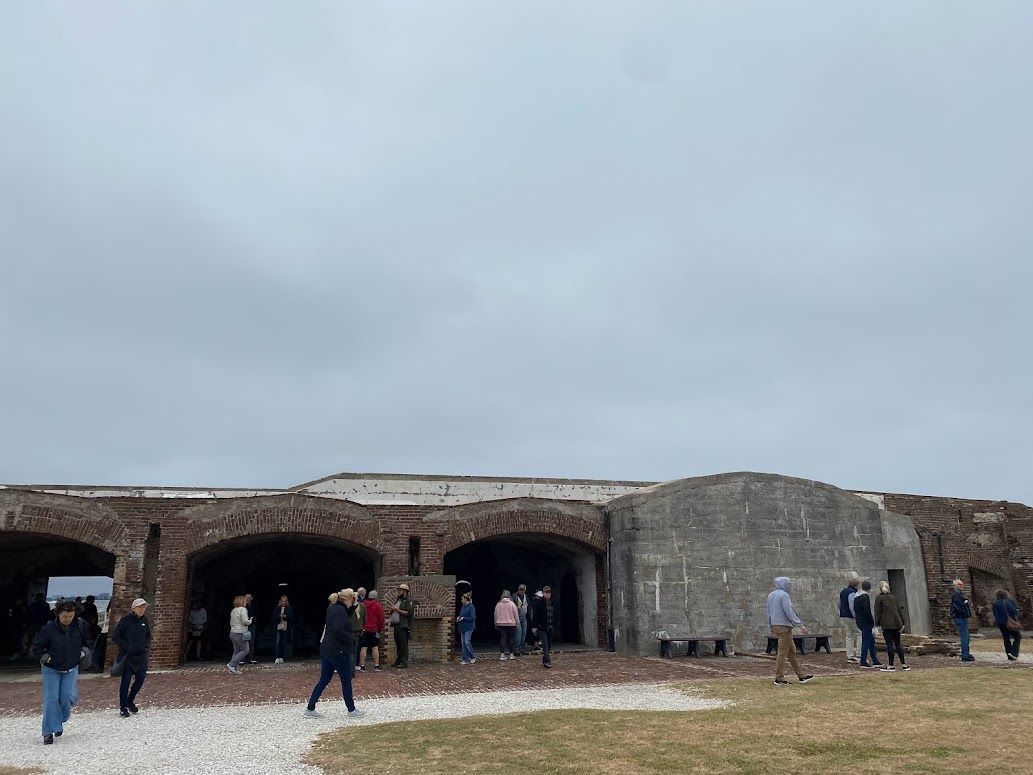Fort Sumter

Positioned in the tranquil waters of Charleston Harbor, Fort Sumter stands as a silent witness to the tumultuous events that unfolded during the American Civil War. This iconic fortification, with its weathered brick walls and storied past, draws history enthusiasts and curious travelers alike.
In this review, we will delve into the historic significance of Fort Sumter and offer a comprehensive guide for prospective visitors, highlighting what they can expect from this captivating destination.
Historic Significance:
Fort Sumter, completed in 1861, occupies a pivotal place in American history, marking the starting point of the Civil War. Its construction began in 1829 and aimed to bolster the coastal defenses of the United States.
However, by the time it was completed, South Carolina had seceded from the Union, and tensions were escalating. The first shots of the Civil War were fired at Fort Sumter on April 12, 1861, when Confederate forces bombarded the fort, leading to its surrender.
The significance of Fort Sumter lies not only in its role as the battleground where the Civil War commenced but also in the broader context of the struggle for states' rights and the abolition of slavery. The conflict that unfolded around Fort Sumter set the stage for a brutal and transformative chapter in American history.

Visiting Fort Sumter:
A visit to Fort Sumter is like stepping back in time, surrounded by the echoes of cannon fire and the stories of those who fought on both sides of the Civil War. To reach the fort, visitors embark on a boat journey across the picturesque Charleston Harbor, providing a unique perspective of the city's skyline. The boat ride itself is an enjoyable experience, with knowledgeable guides narrating the history of the area, creating a seamless transition into the immersive world of Fort Sumter.
Upon arriving at the fort, visitors are greeted by the imposing brick walls that have weathered the passage of time. The well-preserved remnants of the original fortifications offer a tangible connection to the events that unfolded more than a century ago. The Visitor Education Center provides a comprehensive overview of the site's history, setting the stage for a self-guided exploration.

As you wander through the fort, the well-maintained pathways and strategically placed signage guide you through various points of interest. The cannons, strategically positioned along the fort's walls, offer a glimpse into the military tactics employed during the Civil War. Visitors can climb to the top of the fort, providing panoramic views of Charleston Harbor and the surrounding landscapes, offering a moment of reflection on the historical significance of the site.
The Fort Sumter Museum, located within the fort, houses a collection of artifacts, photographs, and documents that further illuminate the experiences of those who lived and fought during this tumultuous period. Exhibits are thoughtfully curated, providing context to the events that transpired before, during, and after the bombardment of Fort Sumter.

The experience is not limited to the physical structures of the fort; the serene surroundings and the gentle sea breeze create a contemplative atmosphere. Visitors often find themselves captivated by the sense of history that permeates the air, fostering a profound connection to the past.
Educational Opportunities:
Fort Sumter serves as an educational resource, offering programs and events designed to deepen visitors' understanding of the Civil War era. Special tours, lectures, and living history demonstrations provide additional layers of insight, ensuring that every visitor leaves with a richer appreciation of this critical period in American history.
For families and school groups, Fort Sumter provides an excellent learning environment. The interactive exhibits and hands-on activities cater to younger visitors, fostering an early interest in history. The site's educational initiatives align with modern teaching standards, making it a valuable destination for students of all ages.
Preservation and Conservation Efforts:
The custodians of Fort Sumter have undertaken commendable efforts to preserve and protect this historical landmark. Ongoing restoration projects ensure that the fort remains a testament to the past, allowing future generations to connect with the events that transpired within its walls.
The National Park Service, which oversees Fort Sumter National Monument, has implemented conservation measures to safeguard the site's natural and cultural resources. These efforts contribute to the overall sustainability of the fort, maintaining its integrity for years to come.

Practical Information for Visitors:
Before planning a trip to Fort Sumter, it's essential to consider some practical aspects. The fort is accessible only by boat, and tours depart from two locations: Liberty Square in downtown Charleston and Patriots Point Naval & Maritime Museum in Mount Pleasant. It's advisable to book tickets in advance, especially during peak tourist seasons, to secure a spot on the boat tour.
The boat ride itself is an integral part of the Fort Sumter experience, offering scenic views of Charleston Harbor and providing historical context. The journey typically takes about 30 to 40 minutes, allowing visitors to appreciate the significance of the fort's strategic location.

Fort Sumter is an outdoor site, so comfortable footwear and weather-appropriate clothing are recommended. Sunscreen and hats are advisable during sunny days, as there is limited shade within the fort. Visitors should also carry water to stay hydrated, especially during the warmer months.
The fort is wheelchair accessible, with ramps and designated routes to facilitate mobility. However, some areas may have uneven surfaces, so visitors with mobility challenges should plan accordingly. The National Park Service is committed to ensuring that Fort Sumter is accessible to all, and staff members are available to assist visitors with special needs.
Plan Your Visit:
Boat Tour Tickets:
- The primary cost for visiting Fort Sumter is the boat tour ticket, as the fort is accessible only by boat.
- Adult tickets typically range from $25 to $30.
- Seniors (62 and older) may receive a discounted rate, usually ranging from $21 to $26.
- Children (ages 4-11) usually have lower ticket prices, ranging from $16 to $20.
- Children under 4 years old may often ride for free.
Educational Programs and Special Tours:
- Fort Sumter offers various educational programs, special tours, and living history demonstrations at additional costs.
- Educational programs for students and school groups may have group rates and special packages.
- Special tours, such as private tours or thematic tours, may have varying prices.
Combined Packages:
- Some tour operators or ticket packages may offer combined deals that include visits to multiple historic sites or museums in the area.
- Prices for combined packages can vary, and it's worth exploring if you plan to visit other attractions.
Additional Fees:
- Parking fees may apply at the departure points for boat tours.
- If visitors choose to explore other nearby attractions or museums, they should consider those additional costs.
Membership Programs:
- Some visitors might be eligible for discounts if they are members of certain organizations, such as the National Park Foundation or other affiliated groups.
*It's important to note that prices can change, and seasonal variations might impact tour availability and costs. Additionally, reservations are recommended, especially during peak tourist seasons, to secure a spot on the boat tour.
Before planning your visit, check the official Fort Sumter National Monument website or contact their visitor information line for the most accurate and current pricing information.